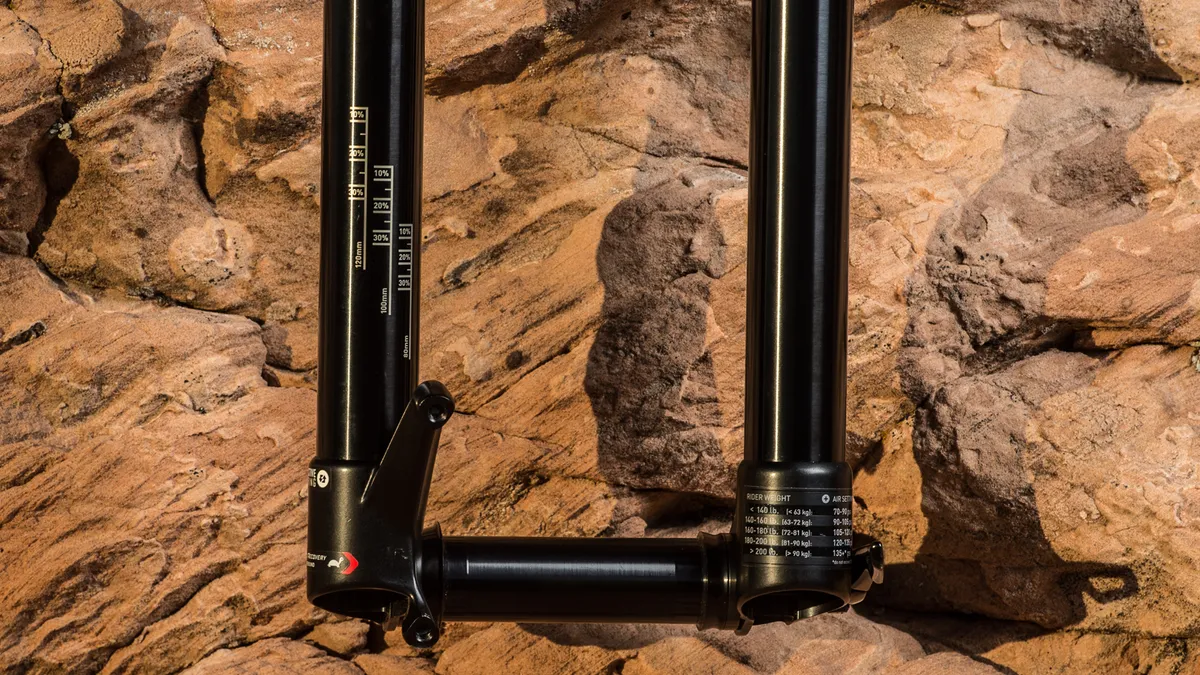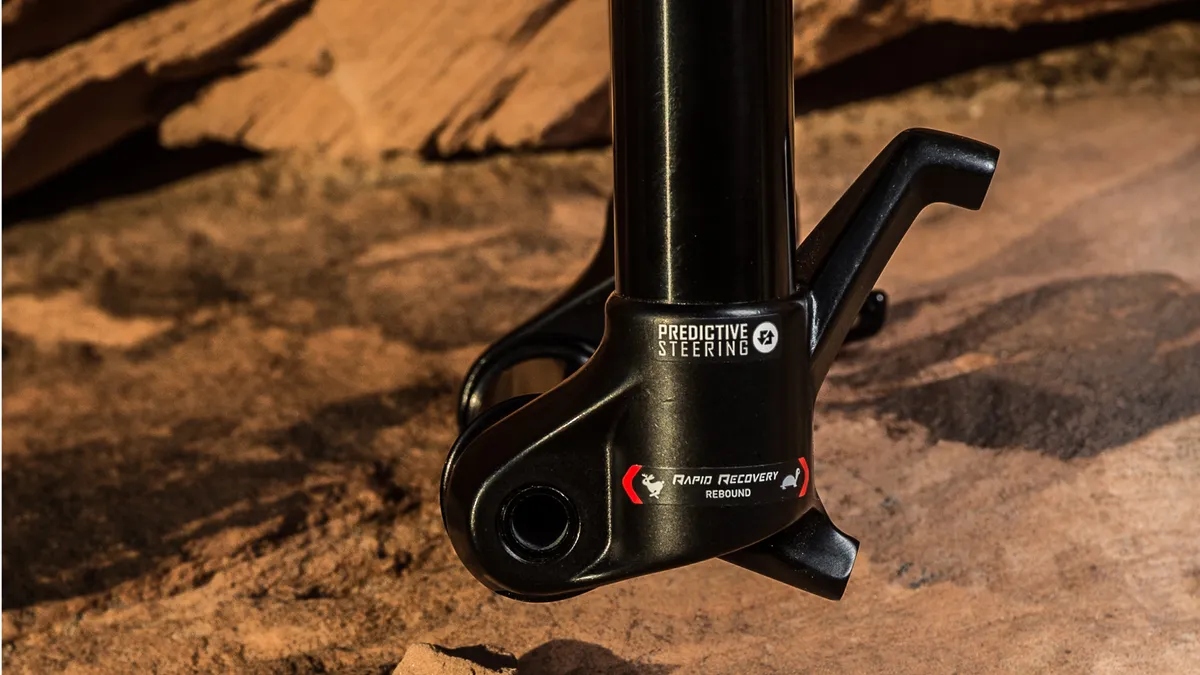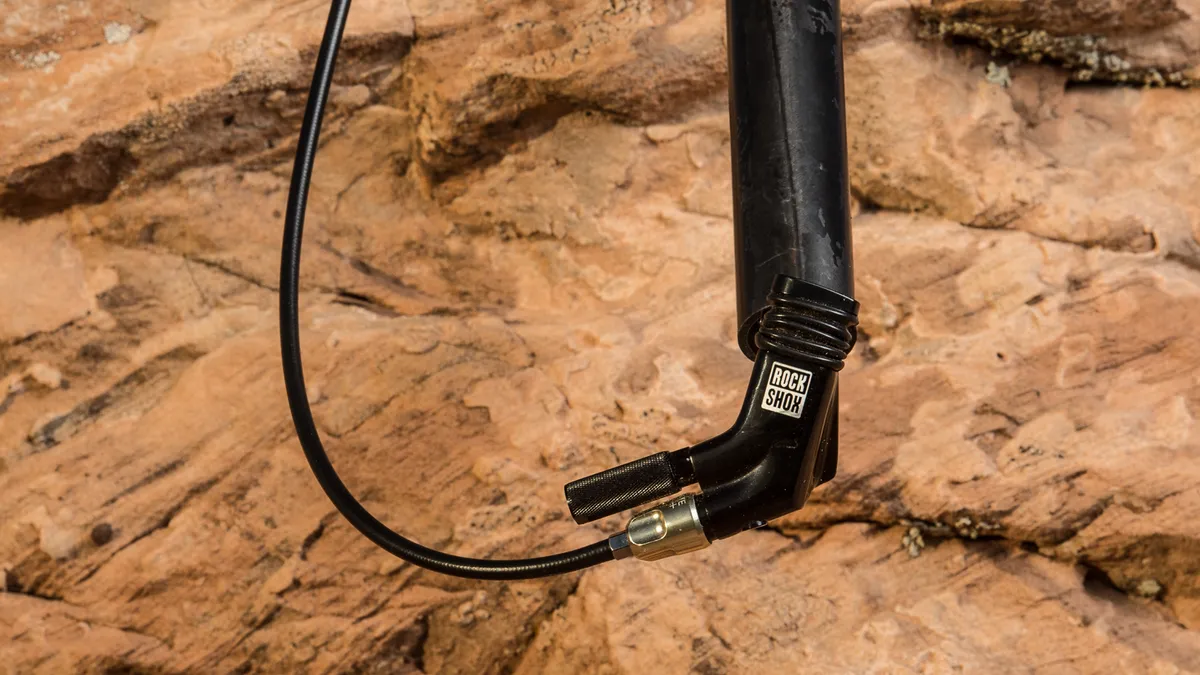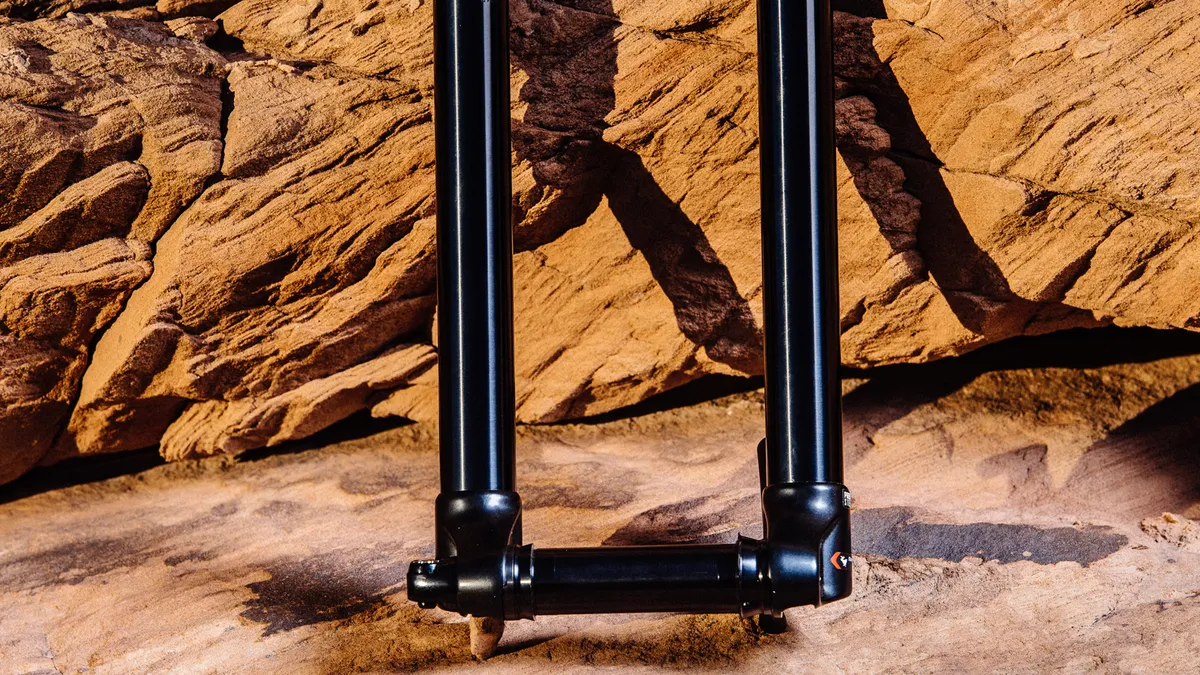For nearly a month RockShox has teased images of its new inverted suspension fork. Today we are able to bring you the complete story of the RS-1.
New fork, old name
The original RS-1 was RockShox’ first suspension fork, introduced way back in 1989. That fork was a groundbreaking piece of engineering that ushered in the modern era of mountain biking. The original RS-1 offered the rider a scant 50mm of suspension travel, which was just enough to win a World Cup title in both cross-country and downhill in 1990. Ned Overend and Greg Herbold both rode the RS-1 to victory in their respective disciplines that year.
The new RS-1 shares the name, but nothing more. Times have changed, disciplines have diverged, and technology has advanced by leaps and bounds. Today’s RS-1 was made possible by pooling the resources of SRAM’s braintrust. Not only did it require suspension engineers, but also experts in composites, as well as the company’s wheel engineers to make the RS-1 a viable product.
RS-1 details
Wheel Size
29in (27.5in version in the works)
Travel (mm)
80/100/120mm
Stanchions
32mm, with Fast Black anodizing
Steerer
1.125-1.5in tapered carbon only
Offset
46 and 51mm options
Axle
Predictive Steering - Torque Tube
Damper
Accelerator
Damper Adjust
XLoc Remote (Sprint or Full Sprint)
Spring
Solo Air system
Weight
1,666g / 3.67lb
Pricing
US$1,865 / €1,658 (UK pricing TBD)
ArrayWhy inverted?
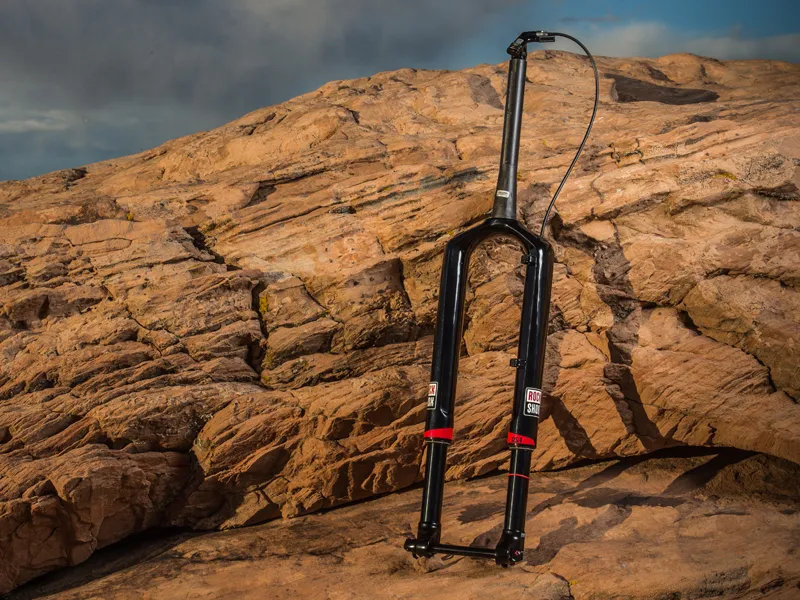
The most striking feature of the RS-1 is the inverted design. Though they are the norm on motorcycles, the history of inverted forks on mountain bikes has been checkered at best. Most inverted mountain bike forks have tended to have too much torsional flex or, if they were stiff enough, they came with a significant weight penalty over traditional designs.
The reason suspension designers keep returning to inverted forks is that there are tangible benefits to be had if properly executed. The seals in an inverted fork are constantly bathed in lubrication, greatly improving the fork’s small-bump sensitivity.
All about integration
The challenges RockShox engineers faced were overcome though an integrated approach that few, if any, of the company’s competitors can match. “We understood the benefits, but ran into the same challenges — that is the twisting, the torsional forces. We looked at the front end as a system to give the fork the stiffness it needs at a competitive weight,” said RockShox product manager Jed Douglas.
The RS-1 is targeted at World Cup cross-country racing. As such, it must be extremely light as well as stiff — two criteria that have been at odds with each other in past inverted forks. While top-end ‘World Cup’ branded forks, such as the SID and Revelation, have featured carbon crowns and steerer tubes, the RS-1 takes things once step further: the tapered 1.125-1.5in steerer, crown and upper fork legs are all co-molded from carbon fiber for impressive strength-to-weight.
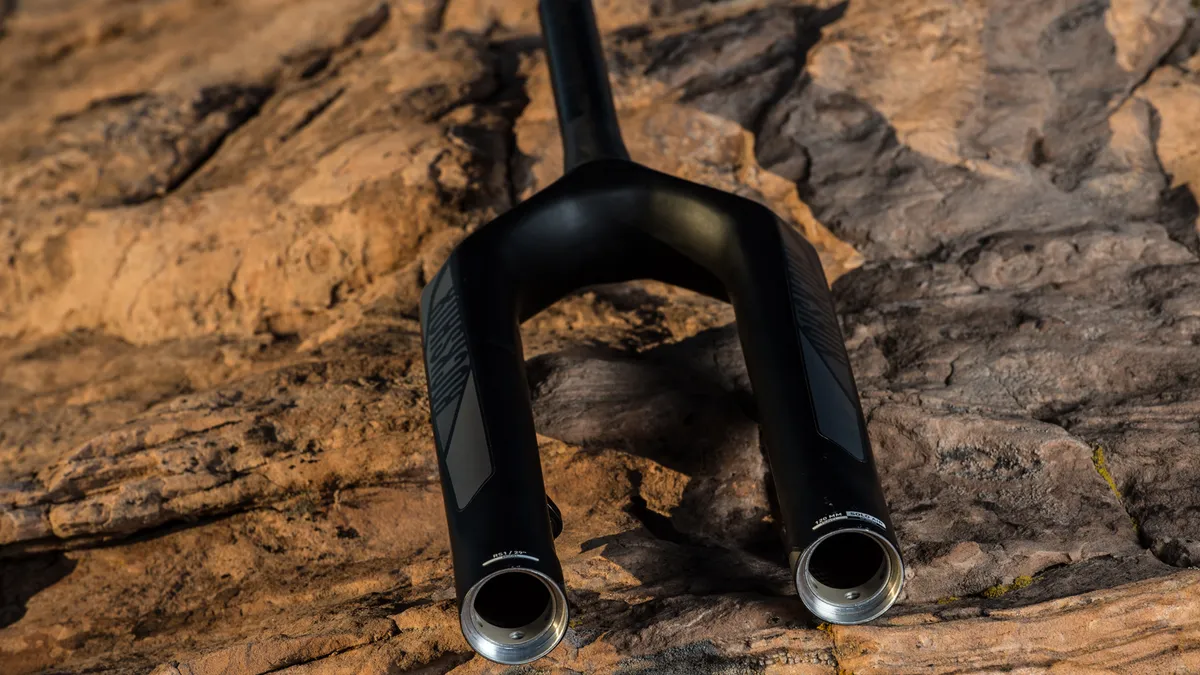
The second piece of the puzzle was the interface between the hub and the lower fork legs. The solution is a proprietary oversized system called Predictive Steering.
While the RS-1 uses the same 15mm Maxle Ultimate introduced last year for the Pike, the hub interface is new and unique. The RS-1 is only compatible with Predictive Steering front hubs, which have a 110mm axle spacing and use a 27mm oversized aluminum axle sleeve called the Torque Tube to bolster stiffness by resisting torsional forces. “The Torque Tube is really what makes this fork able to exist,” said SRAM mountain bike wheel product manager Bastien Donzé.
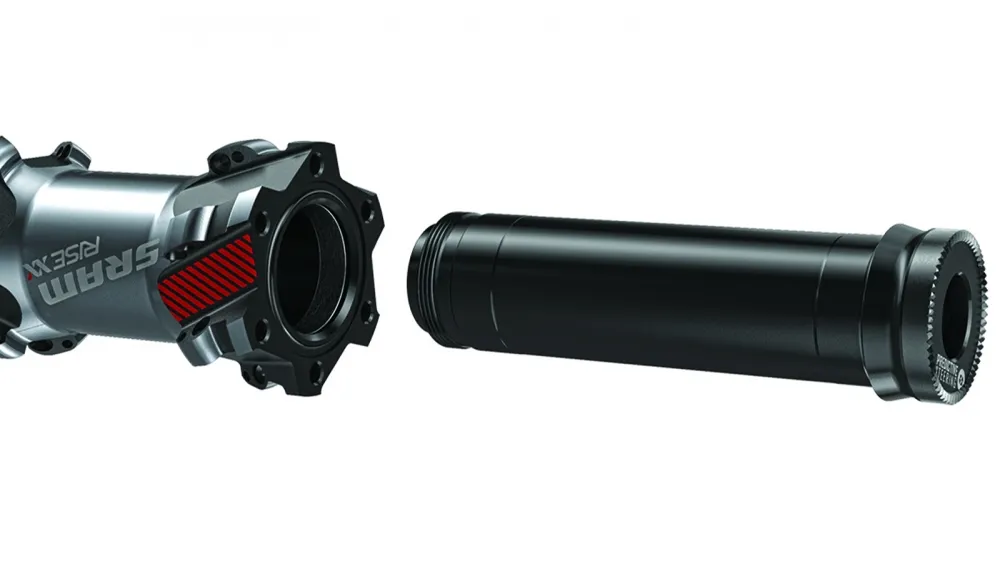
SRAM will offer RS-1 compatible wheelsets for Rise XX, Rise 60, Roam 50 and will also offer a Predictive Steering hub for those who wish to choose their own rims.
Internals
The new fork gets a new damper. Unlike the Charger damper used in the Pike and recently adopted into the BoXXer line, the Accelerator damper uses an independent floating piston, rather than a bladder system, to separate air and oil. A spring on the piston applies pressure to the oil. “By pressurizing the lockout we have the firmest lockout in our line,” Douglas said.
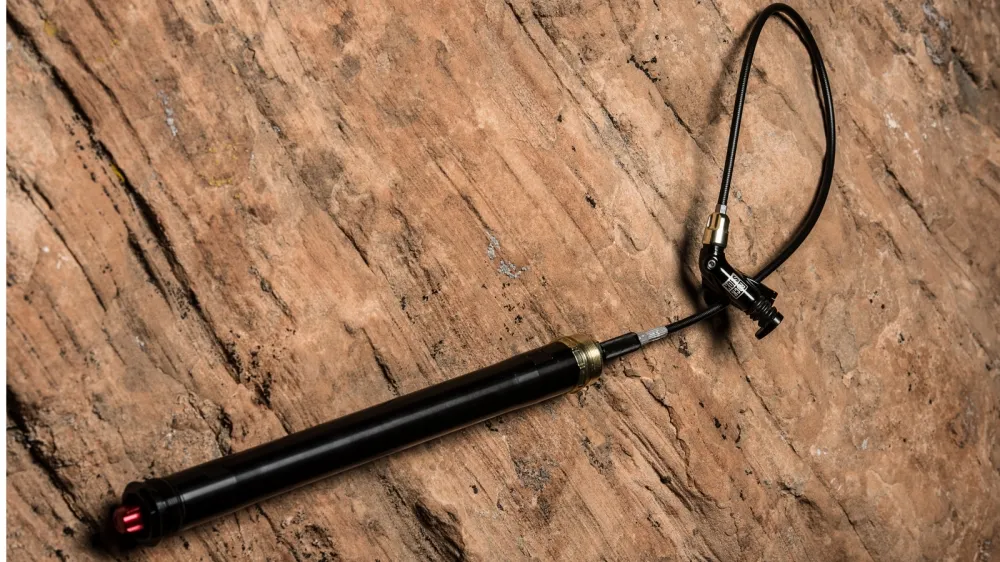
The Solo Air spring is the same as that found in Reba, SID and Revelation. Although its orientation has been flipped so that it fills from the bottom of the fork.
The RS-1 can adjusted from 80 to 120mm of suspension travel by swapping airshafts. Like other 32mm 2014 RockShox forks, the spring rate can be adjusted with the company’s Bottomless Token system.
null
As one might expect, all this R&D comes with a hefty price tag. When it becomes available this June the RS-1 will retail for US$1,865 / €1,658. (UK pricing TBD.)
